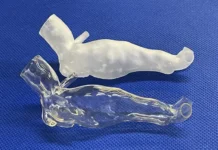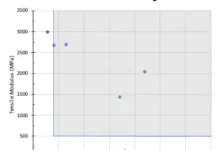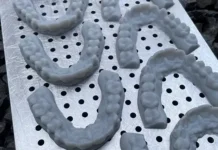By Nancy Cates, contributing writer, UV+EB Technology
 Increasingly, 3D printers are being used in non-laboratory settings such as libraries, schools or workshops. While many different technologies are used in 3D printing, UV-curable 3D printing is one of the easiest ways to print high-quality objects with superior resolution. The rapidly decreasing cost of the equipment has encouraged hobbyists, students and others who want UV-cure quality to dive into the technology – often without adequate preparation. It’s just a printer – right?
Increasingly, 3D printers are being used in non-laboratory settings such as libraries, schools or workshops. While many different technologies are used in 3D printing, UV-curable 3D printing is one of the easiest ways to print high-quality objects with superior resolution. The rapidly decreasing cost of the equipment has encouraged hobbyists, students and others who want UV-cure quality to dive into the technology – often without adequate preparation. It’s just a printer – right?
Not so, according to Mike Idacavage, vice president for business development at Colorado Photopolymer Solutions in Boulder and member of the UV+EB Technology editorial board.
“There are multiple concerns and a variety of areas that require people to be cautious,” he warned. “This is active chemistry.”
Finding the appropriate way to address that concern has been in the pipeline at RadTech for a couple of years. In January 2015, a group including Idacavage, RadTech Executive Director Gary Cohen, Senior Director Mickey Fortune and others began talking about how the organization could provide information to end users who are not scientists and might not be aware of the environmental or safety hazards.
The result of the group’s efforts is a set of recommendations entitled “UV 3D Printing Safe Handling Guide.” The guide is scheduled to be introduced at uv.ebWEST and the RadTech Annual Winter Meeting, February 27 through March 2 in San Francisco, California.
“We were discussing that this technology is going to consumers who might not be aware of how to safely handle the materials, and we felt it was our ethical responsibility to publish a fact sheet or poster telling users how to do that,” Idacavage said. “We wanted to do something before the technology became too common and someone was injured from not handling the equipment or materials correctly. That was our motivation.”
The group began developing the environmental health and safety (EHS) guide by considering what consumers would need to know to safely work with the technology. The next step was to ensure it could be read and understood by someone who did not have a background in chemistry or related science.
“I was shepherding it through development,” Idacavage continued, “and got feedback from other RadTech members along the way. Then, we took it to a more consumer-level audience. The reaction was ‘Why didn’t I have this when I first bought the machine?’ That told us were on the right track.”
“They (end users) need to understand the chemical hazards and the ways they can be handled safely – that it’s not like handling the benign items in the kitchen. It’s important for them to know they need to use appropriate gloves and goggles, to keep food and drinks away from the area, how to clean up any spills and how they can handle and treat the materials with respect. They need to understand their responsibility to keep leftover fluids out of the water system and realize that the local municipality might classify partially cured or uncured resin as hazardous waste.”
In addition to soliciting feedback from end users, content developers also checked with a few vendors of the consumables and obtained positive responses. Several vendors indicated an interest in providing the EHS guide to their customers.
After a few more tweaks, the developers decided they needed to provide the information in a format that was graphically pleasing as well as simple to follow. They set up a competition with some graphic arts students at the University of Iowa.
“We had worked with that group before to develop some UV-curing posters with good results,” Idacavage said. “We gave them the basic information for the EHS sheets in December with a January 2017 deadline.”
Idacavage also mentioned a desire to obtain additional feedback on the text and design from RadTech members before the material is more broadly distributed in early March.
After the content and design are finalized, the EHS guide will be available for download on the RadTech website at www.radtech.org. The group plans to announce the availability of the information via media releases and through contacts with printer and resin vendors.






